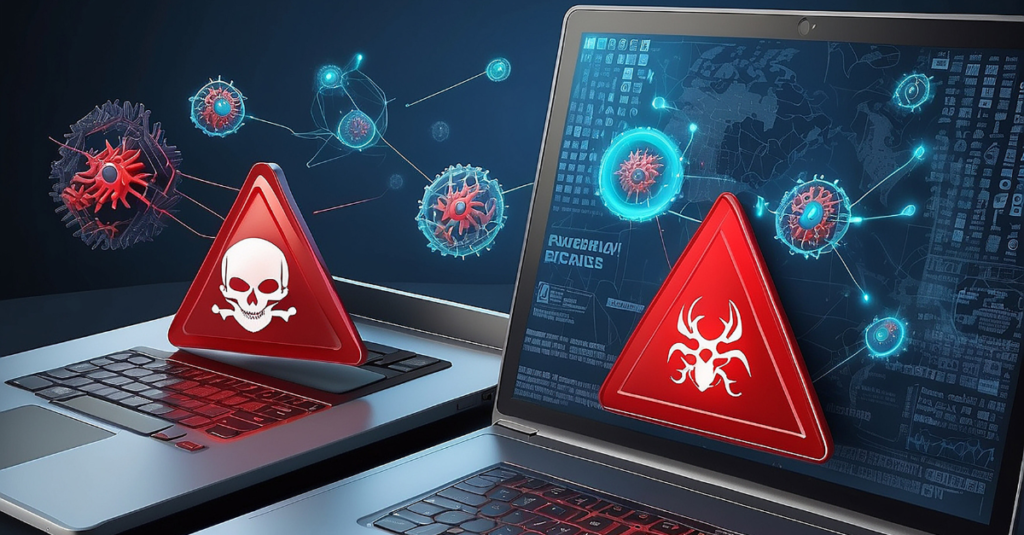Top 10 Warning Signs of a Malware Attack on Your System
Malware attack refers to the infiltration of malicious software into a device or network without the user’s consent. This malicious software can take various forms, including viruses, worms, ransomware, spyware, and Trojans. Cybercriminals launch these attacks with specific goals, such as stealing sensitive data, disrupting normal operations, gaining unauthorized system access, or demanding a ransom for restoring encrypted files. Often, malware spreads through phishing emails, malicious links, infected downloads, or exploiting vulnerabilities in outdated software.

Recognizing the signs of a malware attack is essential to act quickly and mitigate potential damage. Symptoms may include unusual system slowdowns, unexpected pop-ups, unauthorized file changes, or abnormal network activity. Proactive measures, like using updated antivirus software, regularly patching vulnerabilities, and educating users on safe browsing practices, can significantly reduce the risk of infection. Staying vigilant and prepared is key to protecting your systems from malware.
1. Slow System Performance
One of the most common signs of a malware attack is a noticeable decline in your system’s performance. If your computer takes longer than usual to boot up, programs are sluggish, or the system frequently freezes, malware could be the culprit.
Why It Happens
- Malware consumes system resources like CPU and RAM.
- Background processes run without your knowledge, leading to reduced performance.
What to Do
- Open your Task Manager (Windows) or Activity Monitor (Mac) to check for unknown processes.
- Run a full system scan using trusted antivirus software.
2. Unexpected Pop-Ups and Ads
Intrusive pop-ups and advertisements are a hallmark of adware, a type of malware. These pop-ups often promote dubious products or services and may contain links to additional malicious software.
Red Flags to Watch For
- Pop-ups appear even when your browser is closed.
- Ads redirect you to unfamiliar websites.
Prevention Tips
- Use a browser with a built-in ad blocker.
- Avoid clicking on suspicious ads or links.
3. High Network Activity
If your internet connection is slower than usual or you notice a spike in network usage, it could be a sign of malware. Malicious programs often send data to remote servers without your knowledge.
How to Identify It
- Monitor network activity using tools like Windows Resource Monitor or third-party apps.
- Look for unknown applications consuming bandwidth.
Action Steps
- Disconnect your device from the internet.
- Scan your system for malware immediately.
4. Unusual Files or Programs
Malware often installs additional files or programs on your system. These may appear as random folders or unknown applications that you don’t remember installing.
Signs of Suspicious Files
- Files with strange names or extensions.
- Programs launching without your permission.
What You Can Do
- Review installed programs regularly.
- Delete unknown files only after ensuring they’re not critical to your system.
5. Browser Hijacking
A malware attack often targets your browser, altering its settings without your consent. This can include changing your homepage, adding unwanted toolbars, or redirecting your searches to malicious websites.
Common Symptoms
- Homepage is replaced with an unfamiliar site.
- Search queries lead to spammy results.
Fixing Browser Hijacking
- Reset your browser settings to default.
- Clear your browser cache and remove unknown extensions.
6. Frequent Crashes and Errors
If your system crashes frequently or displays error messages, malware could be interfering with your operating system or software.
Typical Issues
- Blue Screen of Death (BSOD) on Windows systems.
- Applications closing unexpectedly.
Recommended Actions
- Update your operating system and software.
- Run a malware scan to identify and remove threats.
7. Unauthorized Account Access
A malware attack can result in unauthorized access to your online accounts. If you notice unusual login attempts or changes to your account settings, your credentials may have been compromised.
Warning Signs
- Passwords are changed without your input.
- You receive alerts for unrecognized login locations.
How to Respond
8. Excessive Hard Drive Activity
If your hard drive is constantly active, even when you’re not using your computer, malware might be running in the background.
Indicators of Hard Drive Overuse
- The hard drive light remains on or blinks excessively.
- Unusual noise from the hard drive.
Next Steps
- Check for background processes using your system’s task manager.
- Perform a malware scan to identify potential threats.
9. Disabled Security Features
Malware often attempts to disable antivirus software, firewalls, or other security tools to avoid detection.
What to Watch For
- Your antivirus software is turned off without your input.
- Security updates fail to install.
How to Address It
- Manually re-enable your security tools.
- Consider using a bootable antivirus tool to clean your system.
10. Ransom Messages or Locked Files
One of the most alarming signs of a malware attack is the appearance of ransom messages or encrypted files. This is a clear indication of ransomware, a type of malware that demands payment to restore access to your data.
Key Indicators
- Files are renamed with unusual extensions.
- A ransom note appears demanding payment.
What to Do Immediately
- Do not pay the ransom; there’s no guarantee your data will be restored.
- Disconnect your device from the network and consult cybersecurity professionals.
Protecting Yourself from a Malware Attack
While recognizing the signs of a malware attack is essential, prevention is always better than cure. Here are some general tips to safeguard your system:
General Prevention Tips
- Keep your operating system and software updated.
- Use strong, unique passwords for all your accounts.
- Avoid downloading files or clicking links from untrusted sources.
- Regularly back up your important data to an external drive or secure cloud service.
By staying vigilant and proactive, you can reduce your risk of falling victim to a malware attack. Recognizing these warning signs early can make all the difference in protecting your data and maintaining your system’s integrity.

Comments
Post a Comment